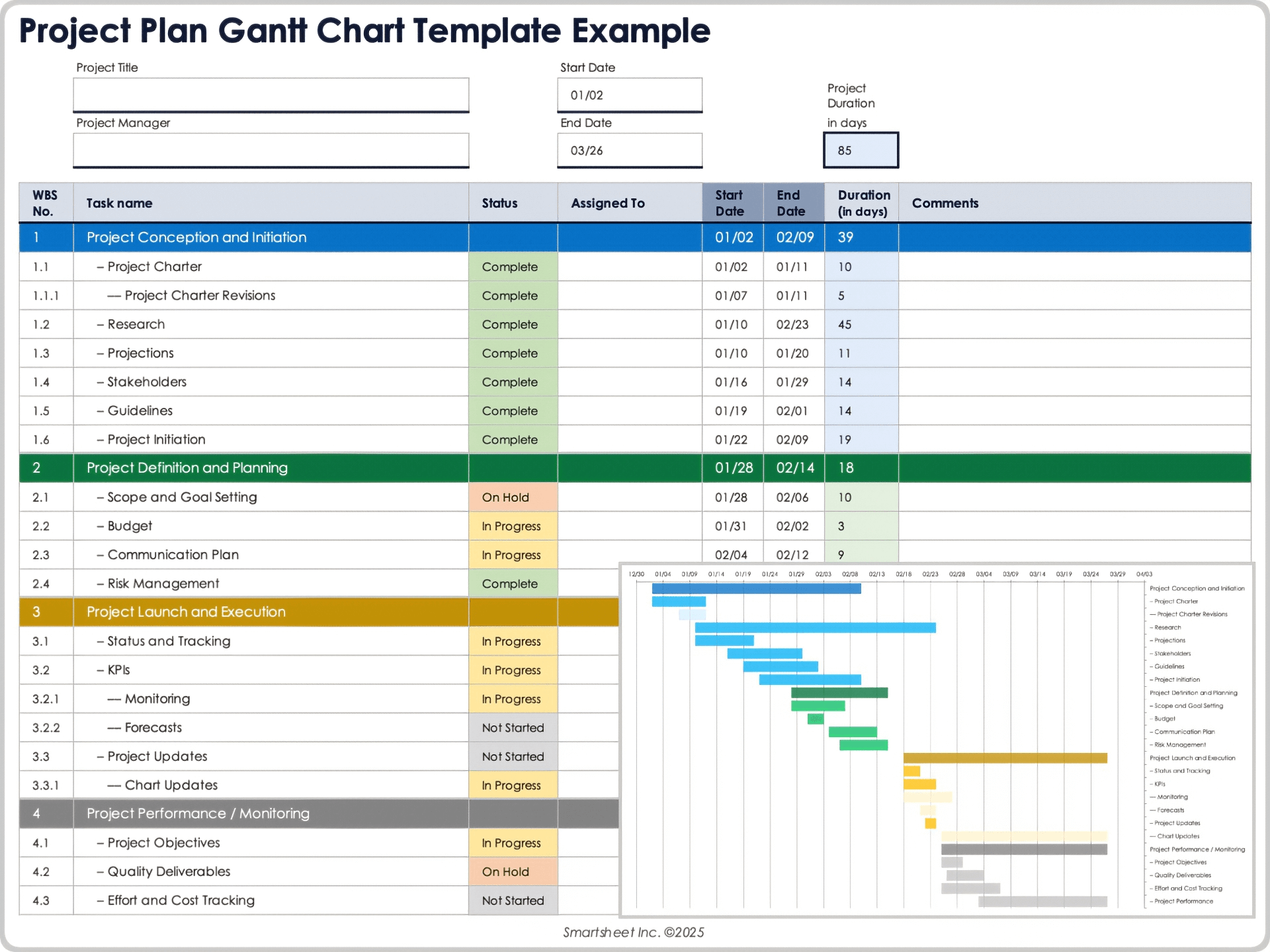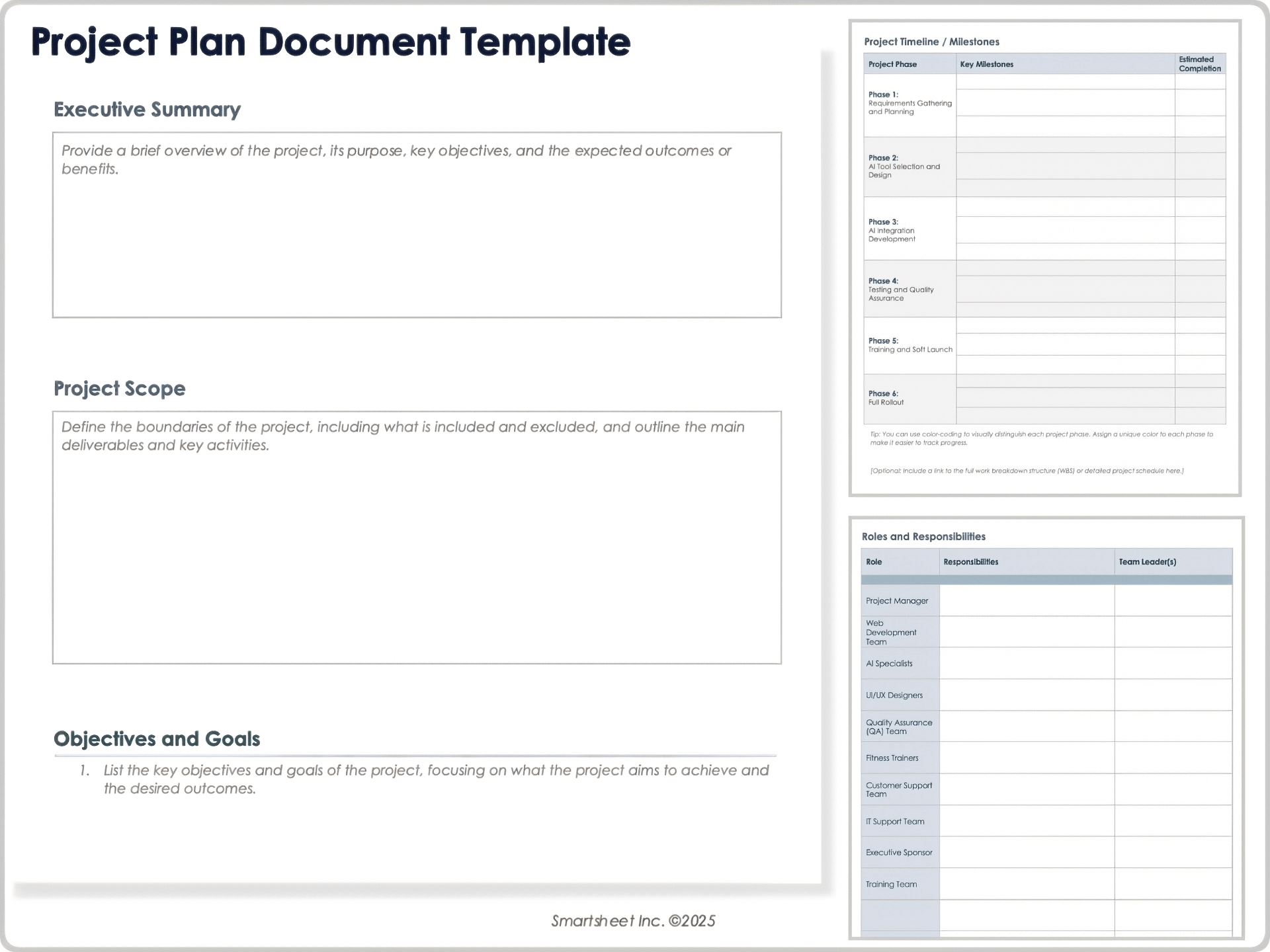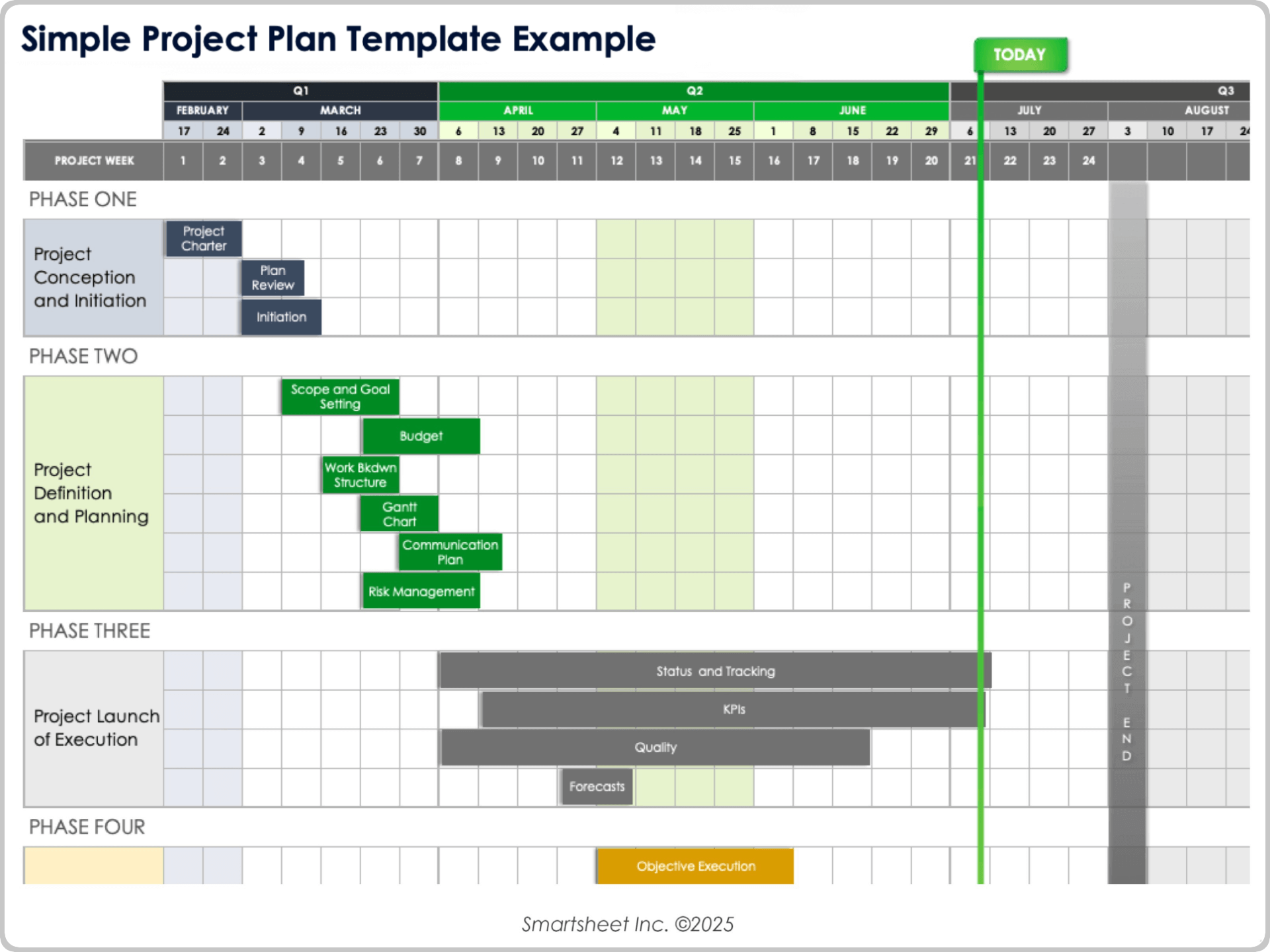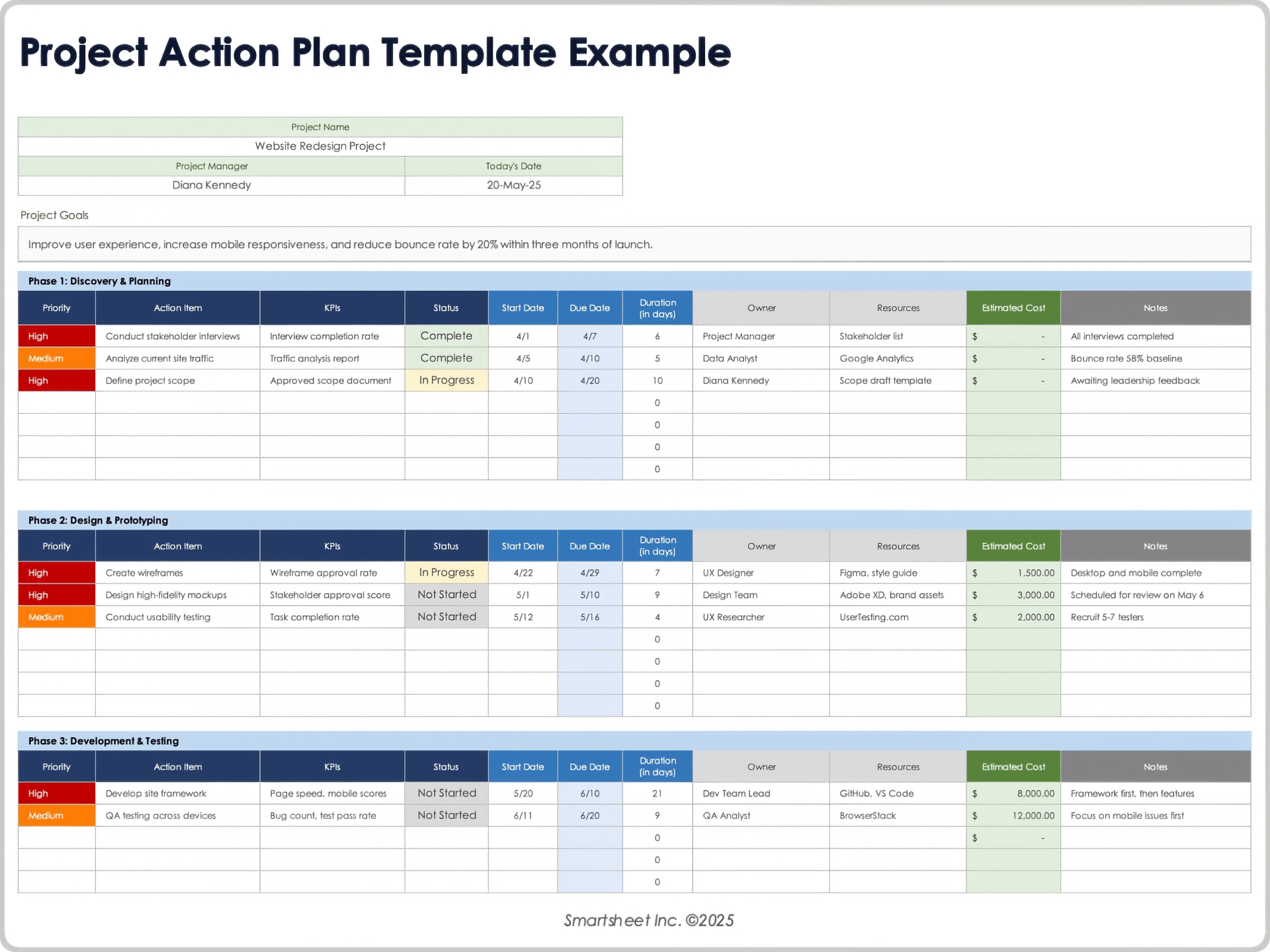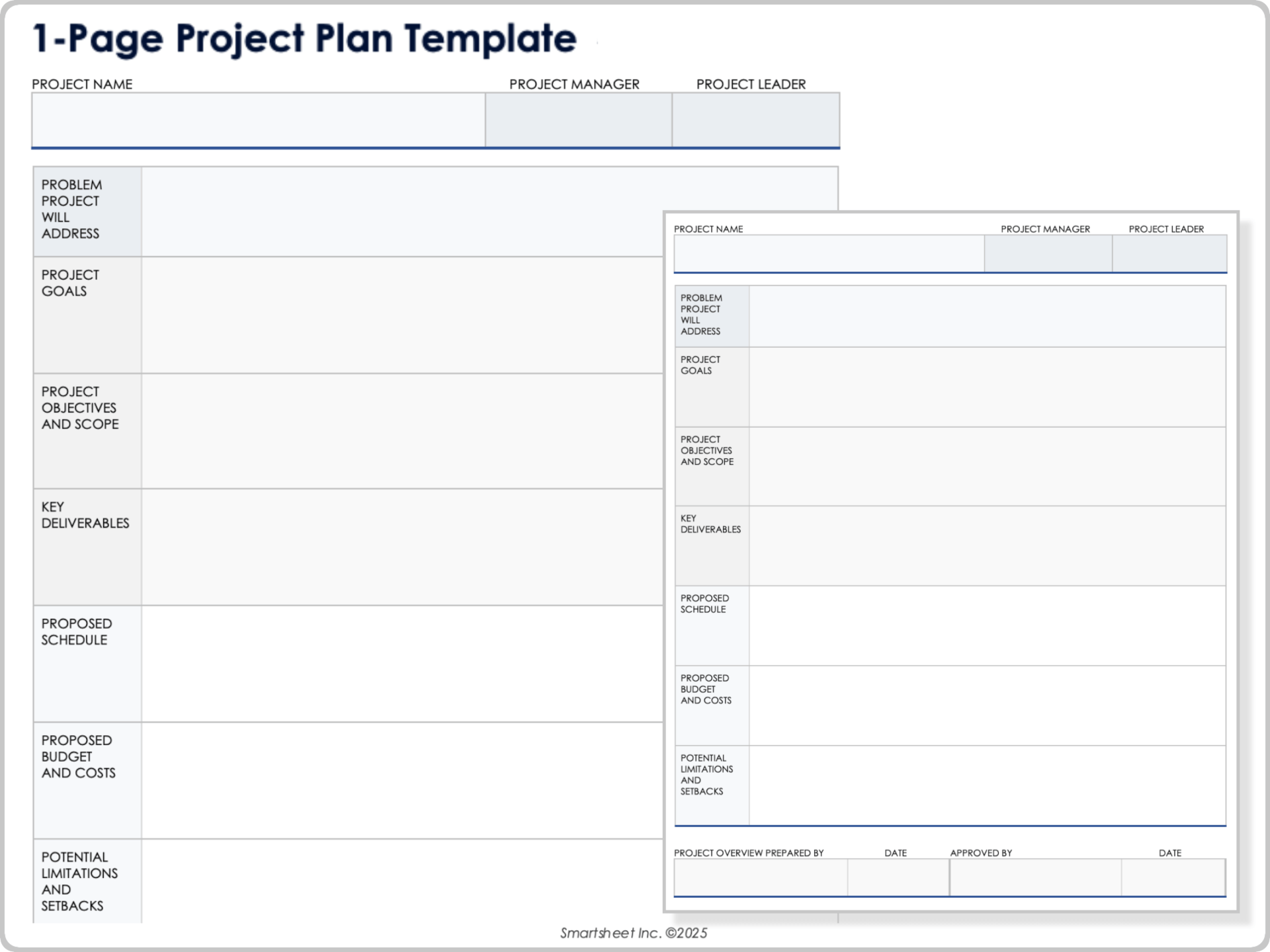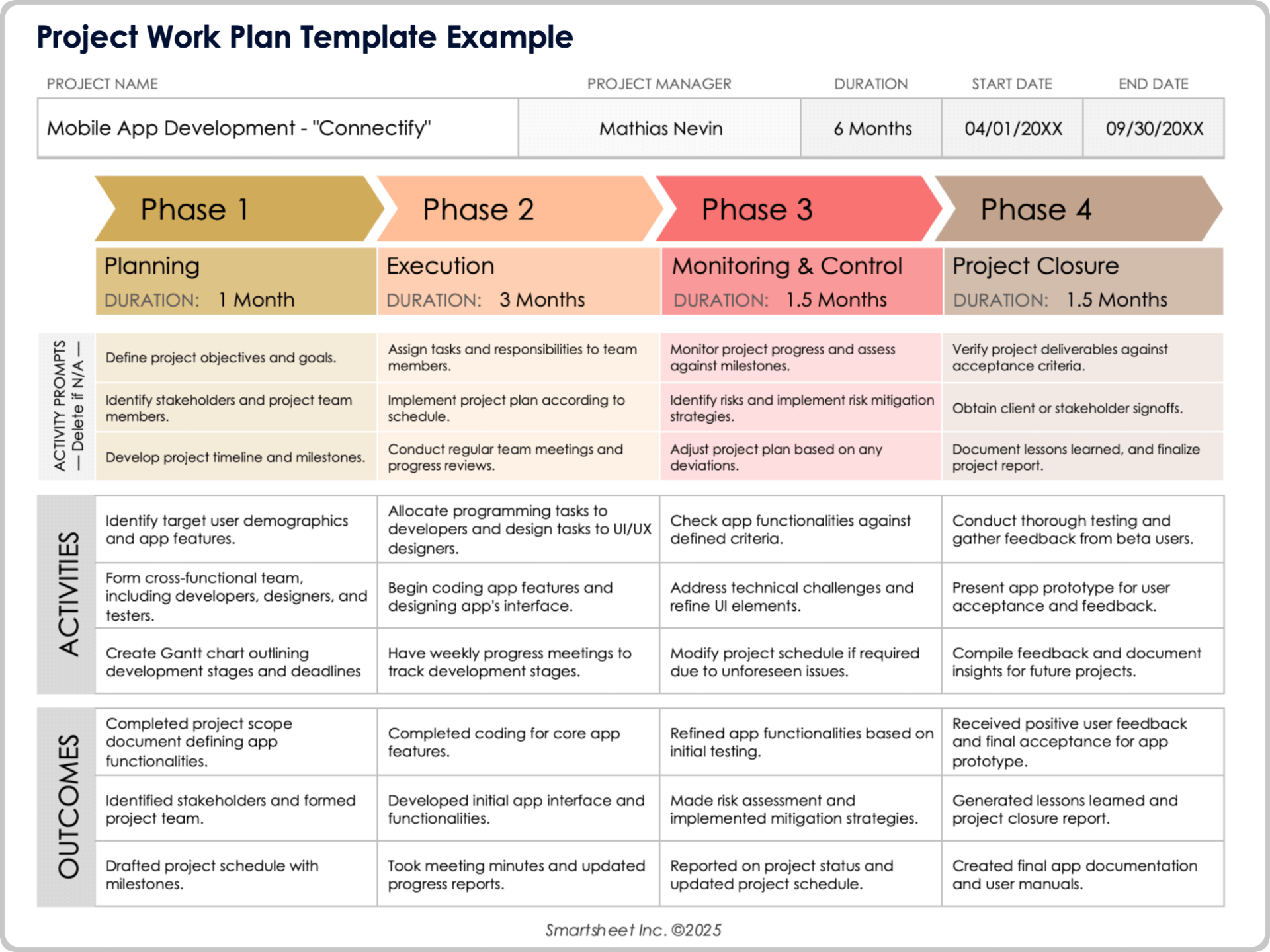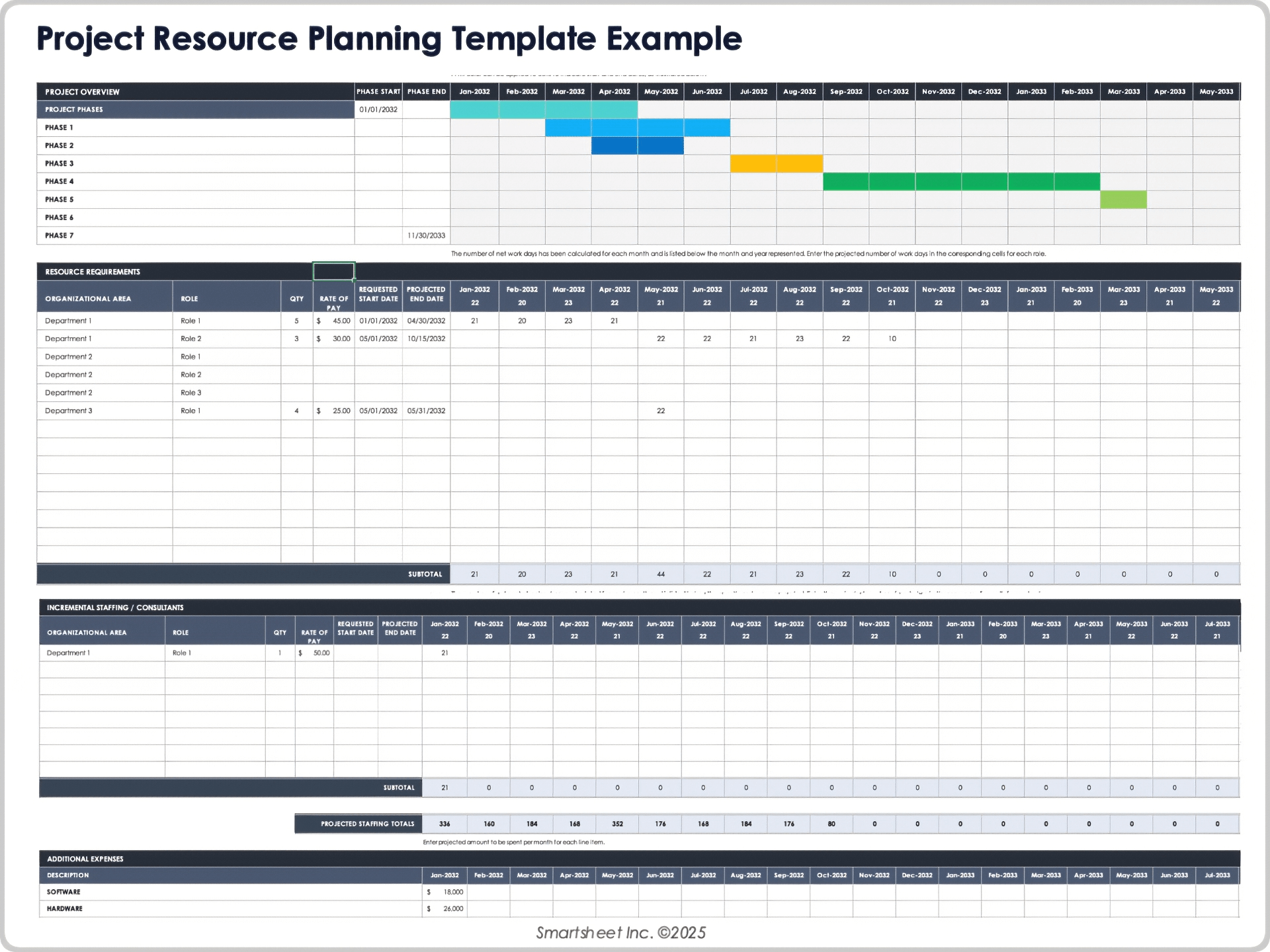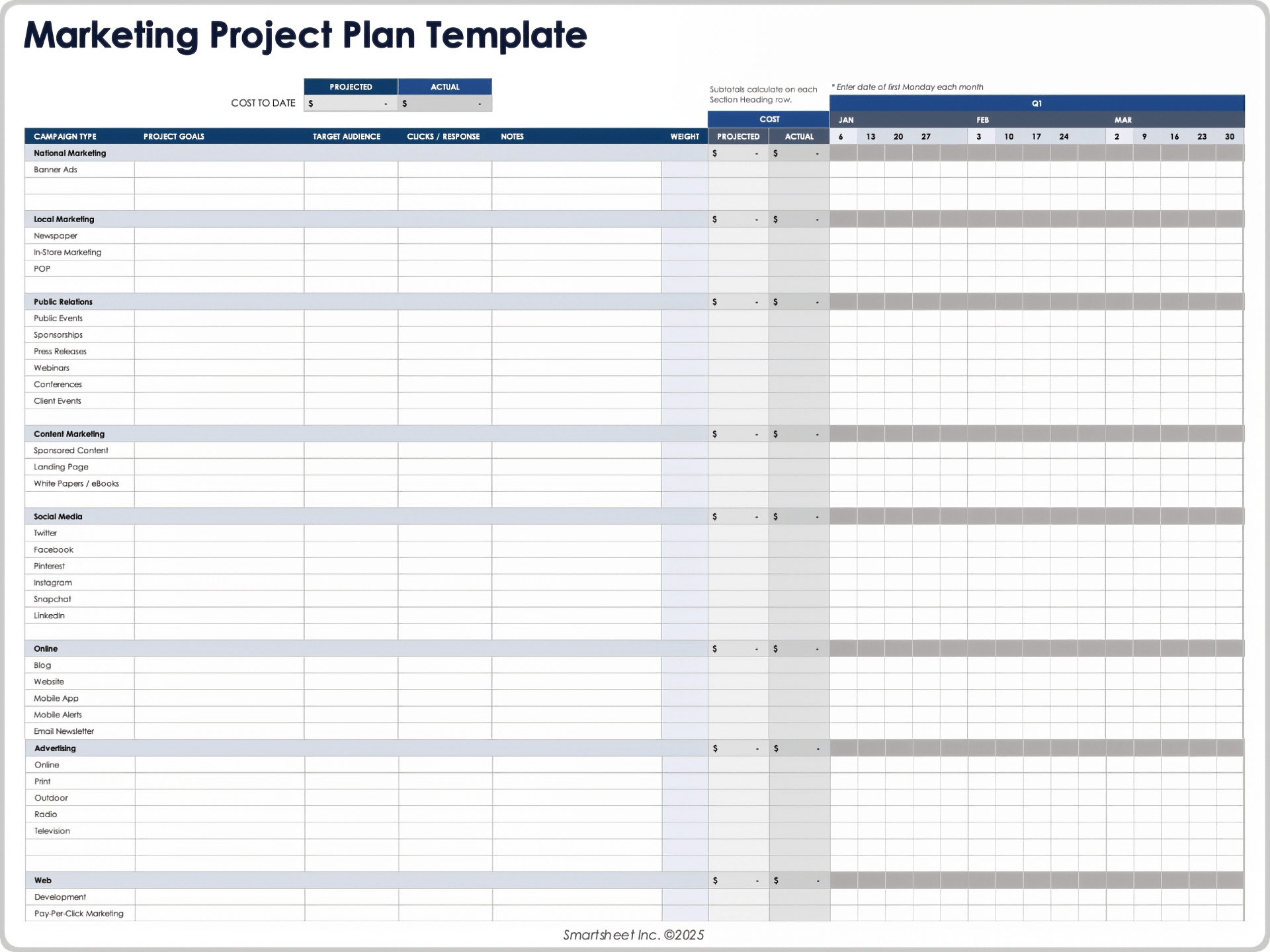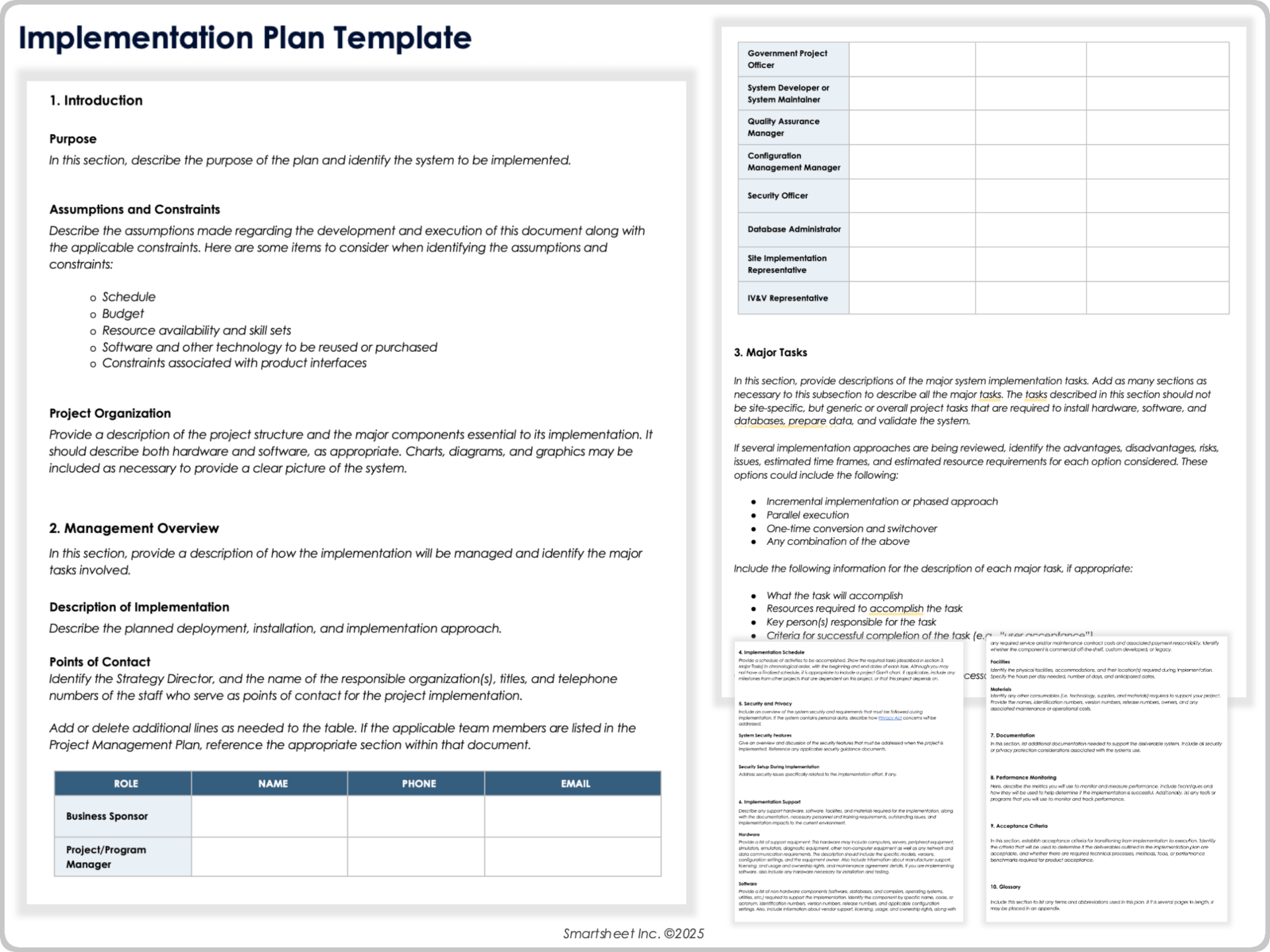Project Plan Gantt Chart Template
Use this template to map out tasks across the entire project lifecycle and keep work organized. A visual timeline helps you track progress on medium- to large-scale projects. The template groups tasks by phase, automatically calculates task duration, and features a Gantt chart for clear scheduling. Color-coded status indicators highlight progress, flag delays, and make dependencies easy to spot.
Download Blank and Sample Templates for
For a more collaborative and automated version, try the Smartsheet Simple Project Plan Template. This template lets you assign tasks, track status in real time, set alerts and reminders, and view the same plan as a Gantt chart, grid, card, or calendar.
